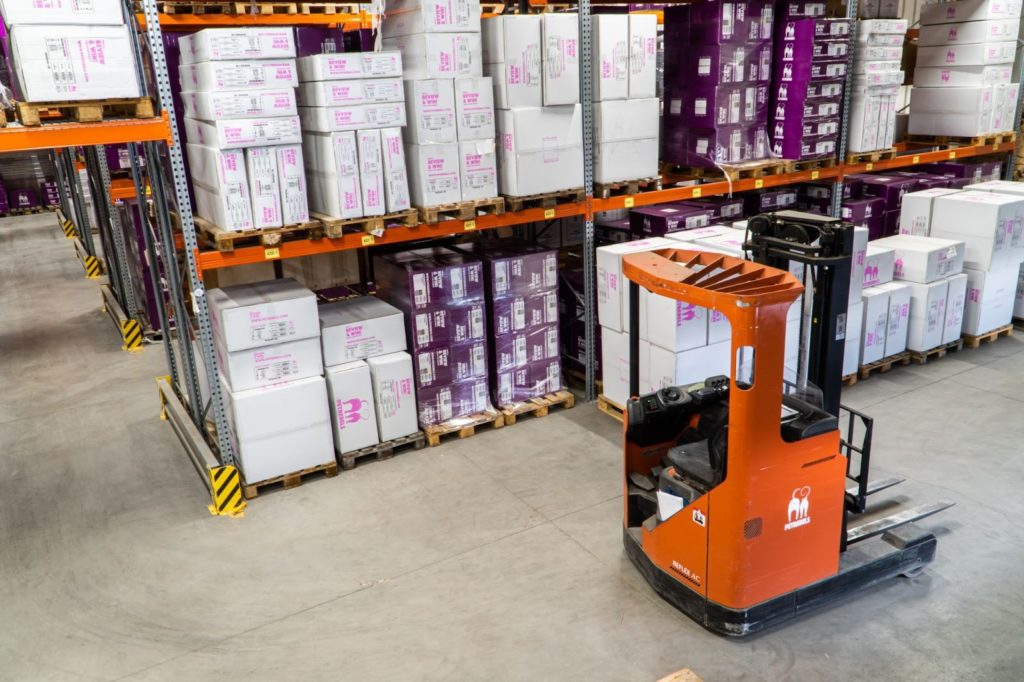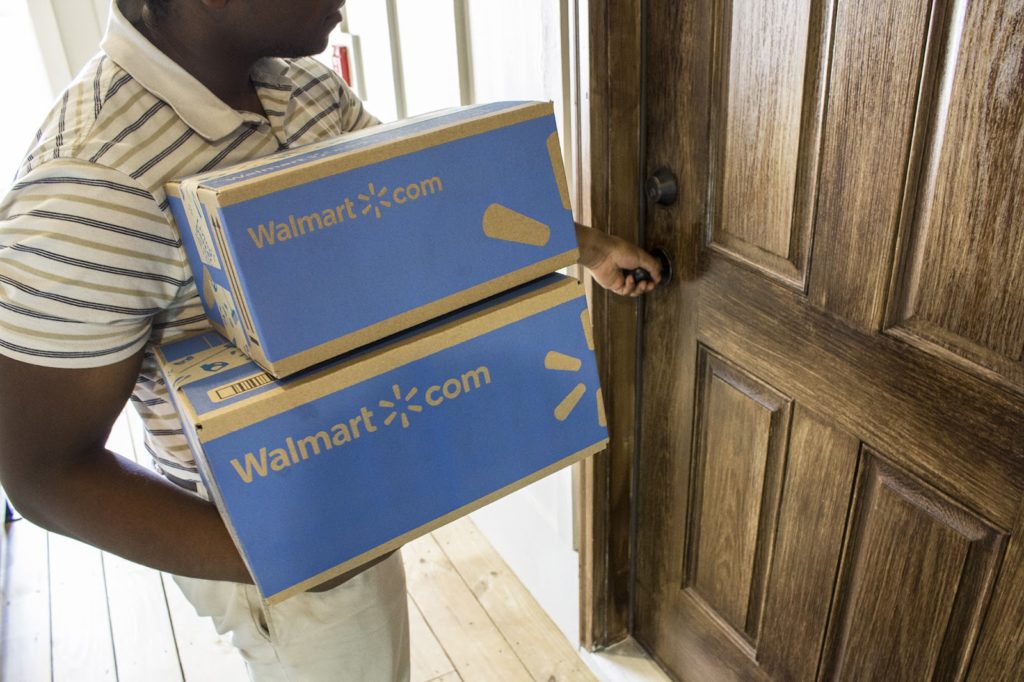The Web Retailer News Digest for March 25, 2022
A recent report from Digital Commerce 360 revealed a surprising trend. 18% of eCommerce retailers surveyed are planning to upgrade or switch platforms. While in a vacuum that might not sound too shocking, another report cited by PYMNTS indicates that sellers are looking for other platform options primarily to switch from Amazon. It notes that Amazon’s take rate of overall transactions is about 30%. Sellers are seeing lower profits on the platform due to increased fees, supply chain issues, higher advertising costs, and the difficulty of competing profitably with low-margin products.
All that considered, it makes sense for sellers to look around and see if there’s a better deal to be had on another marketplace. In fact, the opportunities on other marketplaces are growing and will continue to grow in the future. A study by OC&C Strategy Consultants “predicts that by 2025, spending through the leading online marketplaces will overtake the vast majority of eCommerce outlets in established retail and travel categories..the report estimates that marketplace growth will continue at 15% per year in the West and become as large as direct eCommerce by 2025 when it will account for c.45-50% of online spend.”
With 70% of consumers claiming that online marketplaces are the most convenient places to shop, the growth of different, non-Amazon marketplaces is inevitable – and they offer sellers better options than helping Jeff Bezos pay for another trip to space. Let’s look at a few marketplaces outside the Amazon orbit that offer potential benefits for sellers.
Non-Amazon marketplaces offer new possibilities for sellers
Here’s a roundup of interesting marketplaces for sellers to consider expanding or switching to now, or in the future:
Walmart – As we recently reported, Walmart’s eCommerce sales increased by 11% year over year in fiscal 2022, and by a startling 90% compared to two years before. While some new sellers to the platform are reporting mixed results, the world’s largest retailer is dedicated to continued eCommerce expansion, is growing quickly, and is a cheaper place to acquire customers than Amazon.
Target – Over the last two years, Target has grown its online sales by $13 billion. The opportunity is there, but Target has not scaled its marketplace to take advantage of it so far. Target’s marketplace has operated as invitation-only since its inception in 2019. It currently has only 250,000 sellers and adds 12 per month. When (and if) the doors fully open to one of the most visited US eCommerce websites, sellers should jump at the chance to get in on the action.
Ankorstore – Known as Europe’s anti-Amazon marketplace, in 2022, Ankorstore became the second French startup to be valued at over $1 billion. Ankorstore’s model is different: “The marketplace platform connects independent brands and designers to registered retailers, florists, coffee shops, and other concept stores across Europe, allowing them to sell more varied stock that cannot be found on major e-commerce sites or large retail chains.” Launched in 2019, Ankorstore boasts more than 200,000 independent sellers and 15,000 brands in 23 EU countries.
Oojeez – A newer marketplace that positions itself as a friendlier place to sell, Oojeez is an example of a smaller marketplace actively positioning itself as an Amazon alternative. The platform offers sellers zero subscription, listing, or other fees and access to “160 million new mobile consumers in Europe and globally.”
Kryptonect – This startup plans to open the “Amazon of the Blockchain” on the Binance Smart Chain and allow anonymous cryptocurrency payments. While it hasn’t launched yet, more blockchain-based marketplaces will likely appear in the future as greater adoption of the technology takes hold – and once they do, credit card transaction fees will be a thing of the past.
As eCommerce and online marketplaces continue to grow, there will be more and more opportunities for sellers to find the sweet spot where they make the most profit with the least competition. Whether it’s selling on a retail giant like Walmart, building their own website, or jumping on board the latest blockchain startup marketplace, the future looks bright for third-party eCommerce retailers.
Read more at Digital Commerce 360 and PYMNTS.
Amazon purging aging FBA inventory beginning April 15

It’s time for Amazon FBA Spring cleaning to make room for fresh Prime Day inventory. FBA sellers need to pay close attention to this, as Amazon announced the following changes to its automated inventory removal policies effective immediately:
“Starting April 15, 2022, the following inventory will be removed automatically, unless you opt-out:
- Units that have been in fulfillment centers for more than 365 days and that are subject to long-term storage fees
- Units of ASINs that haven’t sold in six or more consecutive months and that have been in fulfillment centers for more than 180 days
Automatic removals will occur monthly starting April 15. If you want to make updates to your Automated fulfillable inventory settings, such as changing your return address, do so at least 24 hours before April 15 to ensure that your changes are saved.”
FBA sellers can save money on long-term storage fees and enhance their Inventory Performance Index score by automating the clearance of old inventory. For Amazon, the monthly purges free up space in their fulfillment centers and allow them to stock more popular items.
Sellers have the option of using Amazon’s liquidation program to recover value for any products set to be removed. They also can have products shipped back to them as long as a valid return address has been provided. The new removal policies, along with the increased FBA storage fees that went into effect on January 18, have made it more important – and painful – than ever for FBA sellers to manage their inventory efficiently.
Read more at Amazon.
US sellers regaining Amazon market share
In a promising sign for US sellers, a new report from Marketplace Pulse has found that they have gained market share on Amazon over the last sixteen months. For years, the percentage had been steadily decreasing. This growth reverses a multi-year trend of losing to primarily Chinese sellers. Domestic businesses now account for 55 percent of the top third-party sellers on Amazon’s US marketplace, rising from a low of 48 percent in November 2020.
What’s causing the trend reversal? Some of the causes include lockdowns, supply chain difficulties, seller suspensions, and Amazon FBA inventory constraints. There has also been a decline in new seller registrations from China, which formerly accounted for 75% of all new seller registrations. Finally, Chinese retailers are losing ground in the United Kingdom, Germany, Japan, and other Amazon marketplaces.
This information should come as good news to the many sellers who grouse about the unfair competition and “race to the bottom” from Chinese manufacturers, many of whom are all-too-comfortable not playing by the rules. Time will tell if this is a permanent trend or only a pandemic-induced blip.
Read more at Marketplace Pulse.
Walmart wants US sellers and manufacturers for Open Call 2022

If you’re a US-based small business or manufacturer looking to get your products in Walmart’s physical and online stores, there’s a program running right now that might be for you. Open Call 2022 is taking applications until April 8, 2022, from businesses interested in becoming a supplier for the world’s largest retailer.
Walmart holds this annual event to show support for American manufacturing. Almost like a game show, Open Call is a once-in-a-lifetime opportunity for selected entrepreneurs to meet with Walmart and/or Sam’s Club merchants in person and potentially get their product into the hands of millions of customers. The Open Call event gives businesses of all sizes a chance at the big break they’ve been hoping for with Walmart.
Interesting small businesses, sellers, and manufacturers can find out more (including the requirements) in the FAQs and apply for a chance to become part of Walmart’s $535.15 billion in total retail revenues.
Read more at Walmart.
Also in the news
- Account status change for Tomb Sweeping Festival holidays from April 3, 2022, to April 5, 2022. Amazon US.
- Fee categories are made easier to understand. Amazon US.
- Matched target reporting is now available for Sponsored Display vendors and sellers registered in Amazon Brand Registry. Amazon.
- Seasonal restrictions on meltable inventory start April 15, 2022. Amazon US.
- Updates to US Multi-Channel Fulfillment fees start May 9. Amazon US.
- eBay Adds Payout Options in Managed Payments. EcommerceBytes.
- Etsy to Focus on Payments and Fulfillment to Drive Revenue. EcommerceBytes.
- USPS Plans to Add New ‘Connect’ Service to Online Marketplaces. EcommerceBytes.
Webinars in the week ahead
For everyone
March 29: eBay Canada Women in Ecommerce. eBay.
March 31: eBay Canada Small Business 101. eBay.
Various dates: Amazon advertising’s global webinar program rolls on with 20+ webinars scheduled, covering Sponsored Products, Sponsored Brands, reporting, optimization, and tips. Amazon.
For US sellers
March 30: Powerful Amazon Seller Analytics to Improve Your Business. eComEngine.
March 30, 31; April 1: Seller University – Introduction to selling on Amazon. Amazon.
For UK sellers
March 30-31: Retail Without Borders 2022. Tamebay.
Various dates: Amazon webinars covering selling, fulfillment, SFP, advertising, and Amazon Business. Amazon.
And finally…
Amazon sellers are making a killing on nuke survival goods. Uh-oh.

And finally, raise your hand if you had nuclear war survival products as the hot new Amazon niche for 2020. Pardon the puns, but it’s all we can do to laugh at a time like this. According to a new article in TIME, “Amazon’s hottest products are bug-out bags, military meal replacement kits, and iodine pills – taken in the event of a nuclear bomb dropping or a nuclear energy facility meltdown.” The potential of escalation in Russia’s invasion of Ukraine has propelled products likely to be utilized in the case of nuclear war to the top of Amazon’s best-seller charts.
The report finds that prices for these items have steadily been increasing, such as potassium iodide pills rising at rates from 23 to 89 percent over a 90-day period. Sales velocities are also exploding, with the “anti-radiation” pills’ annual sales numbers increasing between 35 to 8100 percent, while SOPACKO ready-to-eat meals sales have risen 2036 percent since January 1.
What’s curious is that the rapid inflation in sales and prices in this ghoulish niche has not yet triggered Amazon’s algorithm or attention. Typically, Amazon would step in to stop potential price gouging, as it did in the case of pandemic supplies such as masks. Amazon removed more than a half-million products and suspended over 2500 sellers for coronavirus-related price-gouging and policy violations. Why has it not acted in this situation?
This whole situation provokes some disturbing thoughts. First of all, while we commend sellers for hustling to make money in a heretofore unexploited niche, there’s a catch that they might not have fully considered. According to experts, in the event of a worst-case scenario, the products they are selling won’t protect either their customers or themselves. And assuming they survive, the sellers won’t have anywhere to spend their newfound riches.
But what’s even more disturbing is the possibility that the Amazon algorithm, which knows what products you might buy, books you might like to read, or movies you want to view, understands something else that we don’t. Something really, really bad – which is why Amazon is doing nothing to stop the price gouging.
This time, we really, really hope that we’re wrong.
Read more at TIME.

Leave a Reply